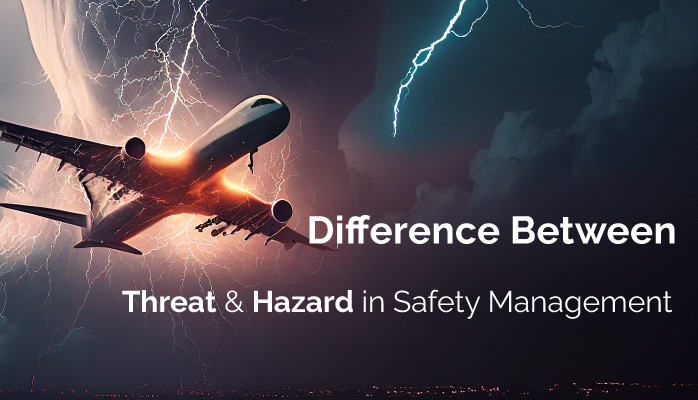What Is a Hazard

A hazard in safety management is a condition that poses danger to your organization, and can lead to an accident, incident, or another mishap if not mitigates.
A hazard satisfies ALL of the following conditions:
- Is a dangerous condition, such as an object, situation, circumstance, that poses an unacceptable level of danger;
- Occurs once in the safety mishap lifecycle;
- Can lead directly to risk occurrence (i.e., safety mishap, accident, etc.) if not mitigated; and
- Arise from hazard mechanisms, such as initiating actions and hazardous sources.
Though it is sometimes confused as other things, such as below, a hazard is NOT:
- Benign objects (birds, mountains, people), which are hazardous sources;
- Safety mishaps, which are another way of saying risk occurrences;
- Damages, which are a product of risk occurrence; and
- Dangerous actions, which are associated with initiating mechanisms.
The only disagreement may be on what constitutes a “dangerous” situation. We advise you to seek guidance from your compliance authority on this point.
Two Types of Threats
Two types of threats are used differently in different contexts. They are:
- General threats: the amount of danger in a given circumstance; and
- Specific threats: a specific object, situation, behavior, etc., that corresponds to a rising level of danger within a given context.
What Is a General Threat
One type of threat is a general threat, which refers to the amount of danger in a given circumstance. It is used in the context of “threat level,” such as:
- “There is no inherent threat in operations right now”; or
- “Given our current ERP, how much threat does a fire emergency pose?”; or
- “Terrorism is a [specific] threat that poses a great [general] threat to aviation.”
What Is a Specific Threat
A threat can also be a generic term for a specific danger, such as an object, situation, behavior, etc. A specific danger can be identified as:
- Contributing to rising danger – such as a hazardous source or contributing factor; or
- Representing actualized danger – such as a hazard occurrence.
Some examples are:
- “In springtime, migrating birds are a threat we have to mitigate”;
- “That moose is no threat because he cannot get over the perimeter fence”; or
- “We have no plan for a bomb threat in our ERP.”
Difference Between Hazard and Threat
Sometimes, hazard and threat might be used interchangeably. Consider the example of a flock of birds flying close to an aircraft. This flock is both a hazard and a threat.
However, because the concept of a threat is vaguer than the concept of a hazard, a threat is not always a hazard. Consider the example of:
- migrating birds, which are a hazardous source but not an actual hazard, or
- fatigue, which is a contributing factor.
Related Aviation Hazard and Threat Articles
- The Internal Aviation SMS Threat: Plan Continuation Bias
- How to Identify Hazards and Assess Risks in Aviation SMS - with Free Resources
- What Are Hazard Risk Assessment and Hazard Risk Analysis in Aviation SMS
The takeaway here is that a hazard occurs (is “actualized”) when your operations interact with hazard sources. A threat is simply a generic way to describe danger, whether the danger has been actualized or not.
Last updated December 2023.




